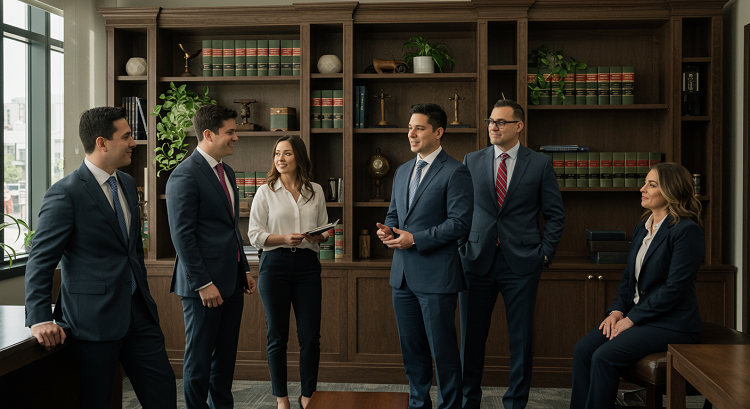Personal injury claims in Colorado involve more than establishing that someone was hurt. Attorneys must determine the injury’s severity and the parties’ legal responsibility. These two elements—damages and liability—form the foundation of any compensation claim. Proper evaluation requires legal knowledge, medical insight, and careful analysis of the incident’s circumstances.
A skilled personal injury lawyer in Colorado uses a combination of investigative tools, expert opinions, and documentation to assess each component. Injury severity influences the claim’s value, while legal fault determines whether compensation can be pursued and from whom. Both must be established with clarity and evidence to build a case that can withstand insurance negotiations or court proceedings.
Table of Contents
Medical Records and Prognosis Shape Injury Evaluation
The first step in assessing injury severity involves reviewing medical treatment records. Lawyers collect emergency room reports, diagnostic imaging, surgical notes, and rehabilitation documentation. These materials confirm that injuries exist and show their extent, progression, and required care.
The type of injury—whether a bone fracture, traumatic brain injury, spinal cord damage, or soft tissue strain—affects how the case is valued. More severe injuries typically involve higher medical costs, more extended recovery periods, and lasting impacts on quality of life. Attorneys pay close attention to whether the injury has reached maximum medical improvement (MMI), a key milestone for determining long-term prognosis and potential future damages.
Functional limitations are also considered. Clients who cannot return to their previous occupation or require ongoing therapy may be compensated for lost earning capacity. Personal journals, physician statements, and vocational assessments help support physical and emotional damages.
Analyzing the Impact on Daily Life and Mental Health
In addition to physical symptoms, personal injury lawyers evaluate how the injury has disrupted the client’s lifestyle. This includes changes in sleep patterns, the ability to perform household tasks, participate in hobbies, or maintain relationships. Emotional consequences such as anxiety, depression, or post-traumatic stress disorder can factor into the calculation of non-economic damages.
A personal injury lawyer in Colorado often uses testimony from psychologists or therapists to show how emotional trauma compounds the injury’s impact. Family members or coworkers may also provide insight into behavioral changes or decreased functionality.
These broader effects help quantify pain and suffering, one of the most subjective aspects of a personal injury claim. When supported by credible evidence, these damages significantly increase the overall value of the case.
Legal Fault Determination Requires a Multilayered Approach
Establishing who is legally responsible for the injury is essential. Colorado follows a modified comparative negligence rule, meaning an injured party can recover damages only if they are less than 50% at fault. If both parties share blame, the plaintiff’s compensation will be reduced by their percentage of responsibility.
To determine fault, attorneys gather police reports, witness statements, photographs, and video footage. In motor vehicle collisions, they also review traffic citations, accident reconstruction data, and vehicle black box records. The goal is to identify negligent behavior, such as speeding, distracted driving, or failure to maintain a safe premise, and connect it directly to the incident.
In premises liability cases, lawyers evaluate property maintenance logs, inspection records, and hazard reports. They examine whether the owner knew of the danger, how long it existed, and what action was taken to correct it. Establishing foreseeability and failing to act within a reasonable time frame strengthens the argument for fault.
Using Expert Witnesses to Bolster Claims
Many personal injury cases require expert interpretation to explain the relationship between actions and consequences. Medical experts provide opinions about causation and prognosis, while accident reconstructionists explain the mechanics of crashes or falls. Economists may calculate the lifetime cost of care or lost income due to permanent disability.
A personal injury lawyer brings in these specialists to clarify technical details that a jury or insurance adjuster might not understand. Expert reports can validate the claim’s legitimacy and challenge any effort to downplay the severity of the injury or shift liability.
Engineers or safety experts analyze whether a design flaw or manufacturing defect contributed to the harm in product liability claims. Their analysis supports the legal argument that a defect, not user error, was the primary cause.
Reviewing Pre-Injury Medical and Behavioral History
Defendants often attempt to argue that a plaintiff’s condition existed before the incident or was caused by unrelated factors. Lawyers must anticipate these defenses and review the client’s medical and occupational history. Comparing pre- and post-incident functionality helps draw a clear line between the accident and the resulting impairments.
When pre-existing conditions exist, attorneys differentiate between old and new injuries. They argue that even if the client had a previous issue, the incident worsened it, leading to additional suffering and expense. In Colorado, plaintiffs can still recover damages when a negligent act aggravates an existing condition.
Comparative Fault Strategies in Disputed Cases
In cases where fault is shared, attorneys develop strategies to minimize their client’s percentage of responsibility. For example, if both drivers in a crash were speeding, the lawyer may argue that the other party was also texting, ran a stop sign, or had impaired visibility. Witness testimony, dash cam footage, and road condition analysis become vital in these disputes.
Attorneys also use deposition transcripts to challenge inconsistent or biased accounts. Under Colorado law, establishing a lower percentage of fault ensures that the injured party retains the right to recover damages.
Aligning Damages with Legal Responsibility
Ultimately, the strength of a personal injury case depends on how well injury severity and legal fault are aligned. A catastrophic injury with unclear liability—or a minor injury with obvious fault—can each present legal challenges. Lawyers evaluate both aspects to determine the most strategic path forward: settlement, mediation, or litigation.
Understanding how attorneys assess these key factors gives clients greater clarity about their case’s strengths, weaknesses, and potential outcomes.

